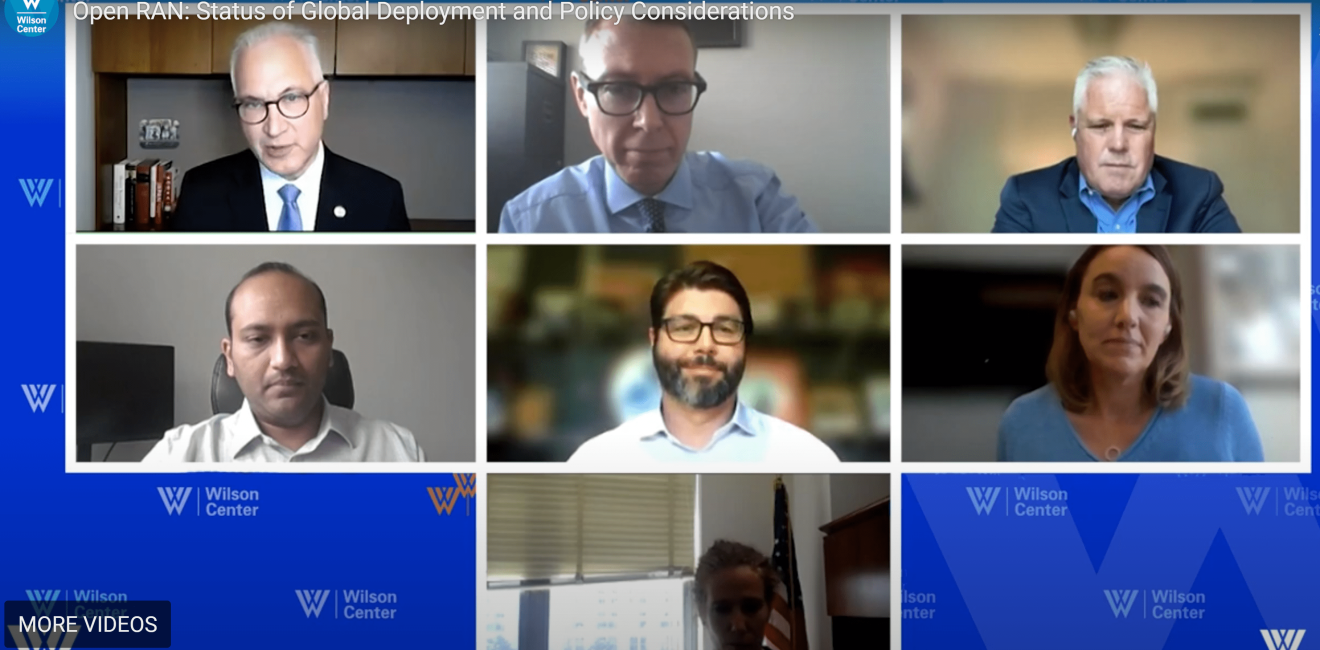Advancing Commercialization
A large priority of many telecommunications companies is to continue developing Open RAN technology for the eventual commercialization of the product. “...A cloud native architecture is needed as we head into the evolution of 5G and the capabilities in the network that we all desire,” said Becky Fraser, Senior Director of Government Affairs at Qualcomm, while discussing Qualcomm’s and other companies’ actions in driving innovation in Open RAN technologies.
Key to this advancement towards commercialization is safeguarding deployment through rigorous testing, whether that be field or lab testing, to ensure the integration across laterals. These early pilots, in the form of interoperability testing (IOT), ensure a more reliable, harmonized integration with existing infrastructure. Particularly, according to Ganesh Balasubramanian, Global Vice President of 5G at NEC Corporation, “Having that IOT in Open RAN standardized to a certain extent has been happening the last 12 to 18 months…” Further developing interoperability testing is crucial to ensuring functionality between communicating networks and systems. This, in turn, brings providers closer to being able to commercialize Open RAN technologies.
Testing is not just about the technology, but about the human power and vendors who will be impacted by Open RAN. David Jeppsen, Vice President of NTT Docomo USA, voiced similar sentiments when discussing integration and testing improvements in Open Virtual RAN technologies. Jeppsen explained that a significant challenge Docomo has faced was making sure multiple vendors’ upgrade cycles aligned. This can be especially difficult in a Virtual RAN solution with over 20 vendors, many of which are competing with one another. To overcome this challenge, Jeppsen described Docomo’s large-scale improvement in facilitating communication between companies and vendors and the company’s overall interoperability testing programs. Making roll out and execution run smoothly among vendors makes for a stronger Open RAN ecosystem, which would, in turn, facilitate the advancement of its commercialization.
Deployment in Developing Markets
The consensus of the panelists was that Open RAN deployment is not a goal just for one region, but for all global markets. The barrier that comes with working towards integration in developing markets, however, are issues such as affordability and geopolitical conflicts. “...these markets are going to be economically challenged in some situations and so, therefore, they’re going to think really carefully about the trade-offs that they accept in terms of how they transition,” said Stephen Hermanson, Global Senior Manager of Security Regulation & Relations at Vodafone. He continues to explain that all of this is, “in an environment where they’ve been buffeted from various directions, in terms of the geopolitical context, the economic context, and so forth.”
Another barrier to deployment in developing markets identified by panelists was the increasing of human capital. Bachus discussed the fact that, “many network operators have outsourced their architecture design and maintenance in exchange for key solutions.” At the same time, Fraser explained that Qualcomm and the others are eager to train engineers in developing countries through cross-collaboration and increase human capital, as a result.
Jeppsen also mentioned how the implementation of artificial intelligence may reduce the need for increased human capital in the future. “Once you incorporate AI into the fundamental parts of the network, theoretically, a lot of the network functionality will be able to run automatically on its own…” said Jeppsen.
Funding and Regulatory Environments and Frameworks
Critical to the advancement of Open RAN innovation, integration, and deployment is ensuring that global competition remains healthy and, therefore, soundly regulated. Clete Johnson, Senior Fellow at the Strategic Technology Program of the Center for Strategic and International Studies, explained, “The challenge is that in any market, markets trend towards consolidation, they trend toward predatory pricing and other anti-competitive approaches globally.”
Johnson specifically cited the People’s Republic of China’s support for Chinese telecommunications companies like Huawei and ZTE, which have relied on mercantilist strategic approaches such as “vendor lock-in, predatory pricing, and market capture.” Johnson argued that a sound regulatory framework would prevent predatory economic policies and promote healthy competition.
In addition to regulation, some panelists suggested Open RAN roll out might be properly supported by government funding and multilateral initiatives. Bachus, on the topic of the CHIPS Act’s International Technology Security and Innovation (ITSI) Fund, said that the first round of ITSI funds have been allocated towards, “building on many of these existing programs that we did through the Digital Connectivity and Cybersecurity Partnership (DCCP) with the pillars… develop, deploy, and defend.” Bachus further explained that ITSI funding from the CHIPS Act will not be enough; there must be a global endeavor to address the high costs of entering the Open RAN market. At the same time, Bachus maintained the position that, “the private sector is and should be leading on this.”
In recent years, companies and countries alike have been eager to invest in developing and integrating Open RAN technology into their telecommunications infrastructure. These companies, in the future, are going to look towards further developing their integration and deployment systems through interoperability testing and facilitating effective communication with vendors, as well as providing training for engineers in developing markets. There may be challenges and barriers, but the panelists reaffirmed their organizations’ commitments to making Open RAN a global priority. As Hermanson said, “Many operators around the world are going to be sooner rather than later arriving at a point where they’re going to be taking some strategic decisions about their future deployments of large parts of their infrastructure, and when that moment arrives, this ecosystem of vendors will need to be ready for that scale, that pace, and we need that to be available worldwide – US players, European players, other players.”








